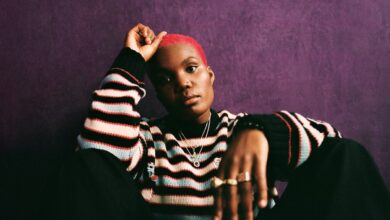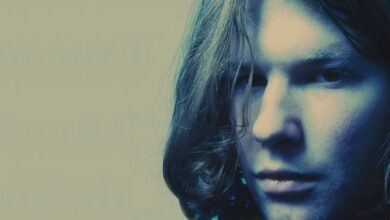The 40 greatest film soundtracks, from Almost Famous to Black Panther

The music that features in a film can be as moving, essential or memorable as any line of dialogue or actor’s performance. A great soundtrack often transcends the film it first appeared in, whether it was comprised of pre-recorded songs by known artists, or original tracks that went on to become long-lasting hits.
Since 2019, film soundtracks have become as synonymous with the Top 10 charts as Ed Sheeran, Drake or Ariana Grande. But before The Greatest Showman and A Star is Born, there have been scores that have become etched into the cultural zeitgeist because they captured moments that spoke to us long after the final credits roll.
Whether it’s moody guitars of Seattle’s grunge scene that served as the backdrop for Cameron Crowe’s Singles, the euphoric trance in The Beach, or the teenage angst of British post-punk rock on Pretty in Pink: so many films would be nowhere near as good without the music that accompanied them.
From Pulp Fiction to Guardians of the Galaxy, here are the 40 greatest film soundtracks of all time:
Before Garden State and 500 Days of Summer, the team behind the adaptation of Nick Hornby’s novel compiled 15 tracks like a mixtape. It was one its picky lead character would have approved of. As with many of the soundtracks on this list, High Fidelity’s success lies in a balance between old-school gems from The Kinks and Elvis Costello to Noughties newcomers including Stereolab and Royal Trux.
This may seem like sacrilege given that the first Dirty Dancing soundtrack is undeniably the more iconic of the two. And yes, the sequel (essentially a remake set in Cuba during the 1950s), starring Romola Garai and future Rogue One star Diego Luna, suffered from a plot loaded with clichés and lack of chemistry between its two lead actors. But the soundtrack – featuring the Grammy-nominated Latin fusion band Yerba Buena, Colombian rock band Aterciopelados, and the Cuban hip hop group Orishasis – is what draws me back to this guilty pleasure of a film. Dirty Dancing 2 didn’t really deserve such a soundtrack, but it adds some actual heat to a film that, asides from the superb dance routines, leaves you cold.
Martin Scorsese had strict rules for the soundtrack to his film Goodfellas: each song had to have been around during the time in which the scene was set, and the tracks had to make some kind of comment on the scene or character in question “in an oblique way”. A staggering 48 songs are heard during the film, including classics by Dean Martin, Fred Astaire and The Drifters, Sid Vicious, The Who and The Rolling Stones. One of the most unforgettable moments is when Bobby Darin’s “Beyond the Sea” plays as the Wise Guys cook dinner, which was “always a big thing” in prison.
When it comes to soundtracking your movie, it helps if the director is a massive music nerd. Of course, music was always going to play a huge part in a film about a boy in a band and his video game quest to win the girl of his dreams. But Edgar Wright, a former music video director, found a way to seamlessly integrate his soundtrack into Scott Pilgrim vs the World’s narrative. Beck, who wrote the music for Scott Pilgrim’s garage band Sex Bob-omb, was a perfect match for their chaotic, DIY approach, while Metric’s song “Black Sheep” was used for a performance by ex-girlfriend Envy Adams’s (Brie Larson) band The Clash at Demonhead.
Drive wouldn’t have worked as well as it did without the soundtrack. Steven Soderbergh’s go-to composer Cliff Martinez assembled the songs for Nicolas Winding Refn’s ambitious indie project, showing an understanding that the most effective soundtracks are often the ones that transport you into the movie without you realising. By using a set of mostly female vocalists, all of whom sing over stark, often ominous electronic beats, Martinez achieved a sonic portrayal of Drive’s startling juxtaposition between beauty and violence.
It’s the biggest movie soundtrack of all time and the 15th best-selling album in the US. Whitney Houston breathed new life into songs by Dolly Parton (“I Will Always Love You”) and Chaka Khan (“I’m Every Woman”). Five of the songs performed by Houston were hits: “I Will Always Love You”, “I’m Every Woman”, “I Have Nothing”, “Run to You” (both Oscar-nominated), and “Queen of the Night”
Yes, it was the Fab Four’s worst film, but the soundtrack is packed with some of their best songs: “I am the Walrus”, “She Loves You” and “Hello, Goodbye”. Where A Hard Day’s Night, Yellow Submarine and Help were undoubtedly more influential on popular culture, Magical Mystery Tour is the most fun to listen to – regardless of how much effort is required to watch.
Belly’s soundtrack captured the East Coast rap scene as it stepped towards a grittier sound and underwent one of the most important transitions for any genre in music history – with contributions from the likes of D’Angelo, members of the Wu-Tang Clan, Nas and Jay-Z.
Richard Kelly’s dark and gloomy film starring a young Jake Gyllenhaal remains one of the few to truly capture what it meant to be a confused, alienated teenager. With composer Michael Andrews, Kelly picked some the best songs from an era that dealt in existential angst via upbeat synth-pop: Echo and the Bunnymen, Duran Duran, Tears for Fears, The Pet Shop Boys and more. By choosing to close the film on Michael Andrews’ cover of Tears for Fears’ “Mad World”, Kelly underpins both the self-absorbed attitude of teenagers convinced that their favourite musicians were the only ones who truly understood them.
Midnight Cowboy – the first X-rated film to win the Oscar for Best Picture – took original material and pre-existing songs to complement the theme of a naïve cowboy/wannabe sex worker trying to survive in a big city, and the juxtaposition between Jon Voight’s character Joe Buck and dying con artist “Ratso” (Dustin Hoffman). Fred Neil’s song “Everybody’s Talkin’”, which underscores the first act, won the Grammy Award for Best Contemporary Vocal Performance, Male (for Harry Nilsson).
Trent Reznor’s work on David Lynch’s 1997 neo-noir movie is loaded with stark electronics and instrumentals by Angelo Badalamenti. In between, you have Smashing Pumpkins, Nine Inch Nails and, of course, This Mortal Coil’s “Song to the Siren” – a track that caught Lynch’s attention and inspired him to co-write two albums for Twin Peaks singer Julee Cruise.
Whit Stillman’s 1998 indie-classic starred then-virtual unknowns Kate Beckinsale and Chloë Sevigny as friends and roommates in early-Eighties New York. Add that to a wall-to-wall disco soundtrack and you’ve got an intoxicating film with classic dancefloor anthems from Chic, Diana Ross, and Sister Sledge belted out one after the other.
In the summer of 1992, the soundtrack to a film that flopped at the box office offered the masses the gateway they needed into the Seattle grunge scene. Cameron Crowe wanted the Singles soundtrack to be “more like a simple mixtape of Seattle’s finest”, and ended up with a veritable who’s-who of every important band from that moment: Pearl Jam, Alice in Chains, Smashing Pumpkins, Soundgarden and Mudhoney… everyone apart from Nirvana. Almost three decades after the film’s release, the soundtrack serves as a musical landmark.
Adapting classic literary texts into modern-day high-school scenarios was a big thing in the Nineties. Cruel Intentions came from Pierre Choderlos de Laclos’s 18th-century work, Les Liaisons Dangereuses, and starred Sarah Michelle Gellar and Ryan Phillippe as Kathryn and Sebastian: two spoilt, bored rich kids toying with the naïve and virtuous Annette (Reese Witherspoon). John Ottman was originally enlisted to compose the score, but producers decided that wouldn’t sit well with the teenage demographic it was going for and instead plumped for a soundtrack of Placebo, Blur, Skunk Anansie, Aimee Mann and Counting Crows.
Flashdance, the first collaboration between producers Don Simpson and Jerry Bruckheimer, is important because it actually changed how some of the most popular films of the Eighties were shot. For each song featured in the film there is a scene presented in the same way as a music video, like the use of “Maniac” as Alex (Jennifer Beals) trains for her dance audition, or the lead song of the film “What a Feeling”, which plays during the opening montage of the steel mill. The latter, written by Italian composer Giorgio Moroder, Keith Forsey and Irene Cara (who performed the track), became the singer’s first and only number one hit. It also won the Academy Award for Best Original Song, a Golden Globe, and a Grammy for Best Female Pop Vocal Performance. Michael Sembello’s “Maniac”, meanwhile, went on to become one of the highest-grossing songs ever written for a film.
Chris Pratt in ‘Guardians of the Galaxy, vol 2′





